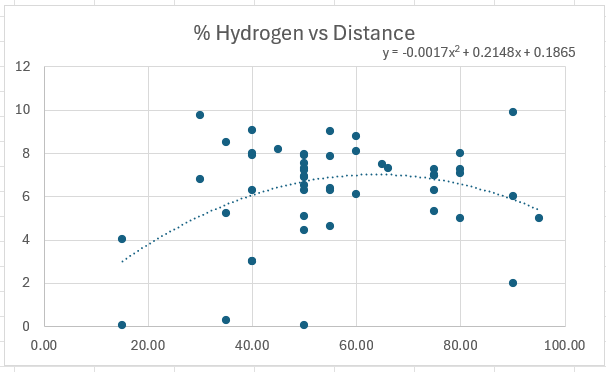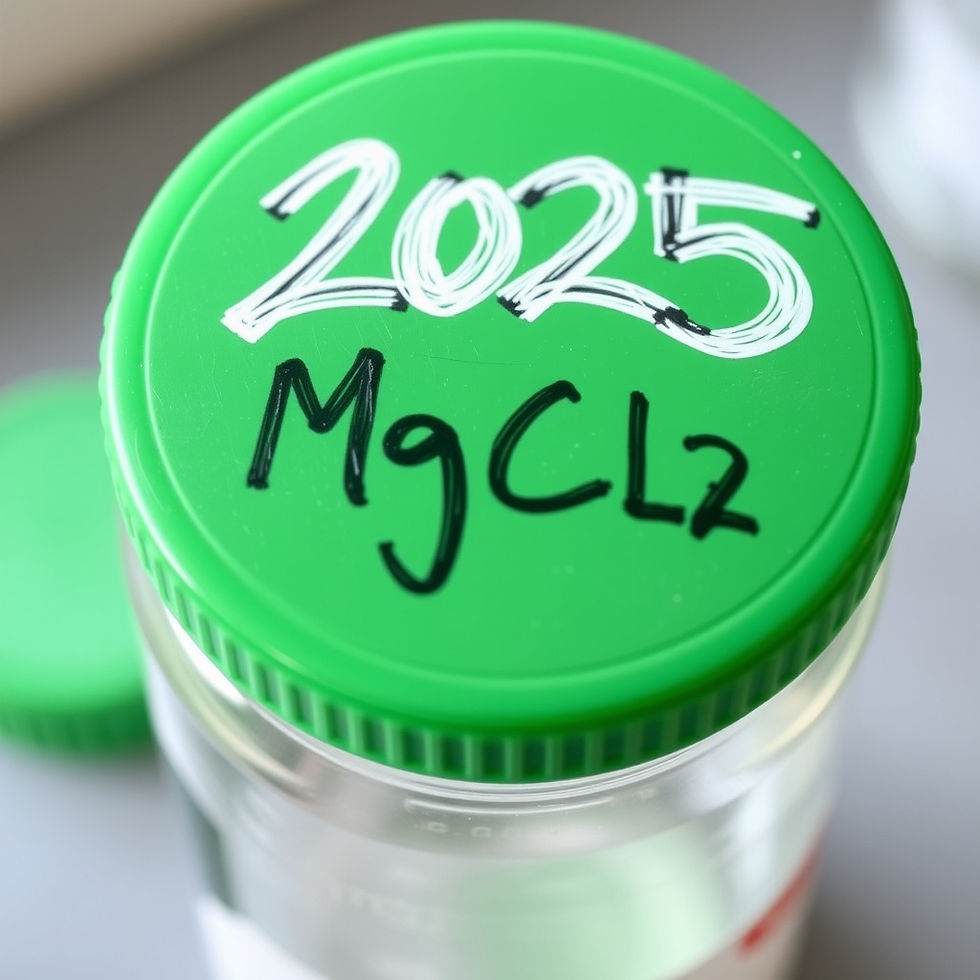A more competitive and mysterious coffee cup calorimetry lab
- Brennan Koch
- Mar 28
- 5 min read
Kid’s love solving mysteries. Kids love competing. I just tried a coffee cup calorimetry lab that did both! The kids got to solve for a real unknown. And the kids got to compete against each other not only for bragging rights, but for points. Here is the set-up for the lab.
Teach q=mcsp∆T
Throughout the thermo unit, my students have used q=mcsp∆T a couple of times. They are very loosely familiar with it. The day before the lab, I introduced coffee cup calorimetry. We analyzed why the heat gained by the water could be equal to the heat lost by the metal. We also looked at how the rates of heating are very different between water and metal. We talked about how specific heats are actually specific. I use this website (https://www.engineeringtoolbox.com/specific-heat-capacity-d_391.html) to show them how all these different materials have different specific heats. That means if we were able to carefully calculate specific heat, we could reasonably be able to figure out what the metal is.
Story of the lab
A homeschool mom donated a bunch of leftover science stuff to our school. Most of it was consumable or just junk. However, there were some little metal cubes in the box. They weren’t labeled. There were some shiny ones all made from the same material and some dull gray ones. Not knowing what they were, I told the class we are going to solve this mystery. Usually when I do “unknowns” it means that the nature of the compound is unknown just to the students. Not this time! It is a real mystery! They are going to help solve the mystery.
The second half of the lab was where they competed for points. I have some iron and aluminum metal cylinders (about 3cm in diameter and 2 cm tall). I think they used to be in a kit for density. Since we know what metals these are, we also know the specific heats. The kids compete to see who can get closest to the specific heat. They will then perform a percent error analysis and combine the total of the two errors. The lowest total error in the class wins! Not only do they win the honor from the other students (we always give three claps for the groups that gets the best results) but they are also competing for points. Only the top team will get 100% on the lab. The losing team will get the lowest score. Everyone else will be in the middle. Before anyone gets worked up over grades, my labs are always worth 20 points. The winner got 20/20 and the loser 18/20. You would be amazed how much more focused kids are when points are on the line. Even if it is only 2 points! I had multiple groups do extra trials just to compete. It matters to them.
Coffee-cup Calorimetry lab instructions
I don’t have a handout for this lab. I don’t even give the kids instructions. They get in their lab groups and brainstorm what measurements they would need to take in order to show that mcsp∆Twater= -mcsp∆Tmetal. After they show their data needs to me, they go do the lab. I have drawn a very simple lab map on the board. I also talk through the safety of the lab. But the students are the ones who have to solve the mystery! It gives them so much more ownership and understanding.

The students put a 250 mL beaker on a hotplate about ¾ full with tap water. They get it up to boiling temperature. They measure the mass of the metal on a scale. Then they carefully place the metal sample in the water using tongs. If they drop the metal in, it will most definitely blow out the bottom of the beaker. They have to be careful. As the metal is heating, they measure out cold water into the double-stacked coffee cups. They always ask how much water to put in. I won’t tell them. I ask them, “Why wouldn’t a full coffee cup be a good idea? And what about 3 drops of water instead?” (The answers are that the change in temp would be very small and that the heat would escape to the air and not just the water.) They get to choose then just enough water to cover the metal piece. It offers one more bit of ownership.
Students then must be careful to take both the initial temperatures. They need the initial temperature of the cold water in the coffee cup and the initial temperature of the metal which is now the same as the boiling water. This is a step that is often forgotten.
Students then move the hot metal into the coffee cup and put a lid on it (foam core board cut to size with a hole for the thermometer poked in it). They carefully mix the metal in the water while they are watching the temperature. Once the temperature reaches equilibrium, they record the final temperatures of both.
Now they have all the information needed to solve for the specific heat capacity of the metal. It is time to record data. I have large whiteboards at the front of my room. I make big data tables that they fill in as they complete the lab. On one board were iron and aluminum and their calculations of percent error. On the other board were the myster cubes labeled shiny and dull. This included their calculated specific heat as well as the metal that had the closest value on the engineer’s toolbox website. (They do have to convert since the engineer site uses kg instead of g.
Record data and redo experiments
As they put their data up, some of them will realize they are losing. The rule is that once all four rounds of the lab are complete, they may repeat any experiment they want. About 60% of groups actually redid a lab. That shows that they want to win!
At the very end of the class we discuss what the consensus is for the mystery cubes. The shiny one have a specific heat near that of iron and chromium. This suggests that it is stainless steel. We proved this with a magnet. The dull one had discrepant data. The best consensus fell to manganese which had the right color and specific heat. One student even came back after school and did a density test to see if it matched manganese, which it did.
This could be a great lab to introduce coffee-cup calorimetry. Or maybe you could remodel your current lab to be more mysterious and competitive. Kids love a mystery. Kids love competition.
Looking for more ways to engage your students competitively? Try Stoich Decks games! Our games are designed to be used as part of the curriculum, not just a cute side-note. Use Up & Atom to teach moles, Trendy to teach periodic trends, CHeMgO to write ionic formulas, and our newest game Who's your ion? to teach balancing ionic charges and solubility. Check them out today.






Comments